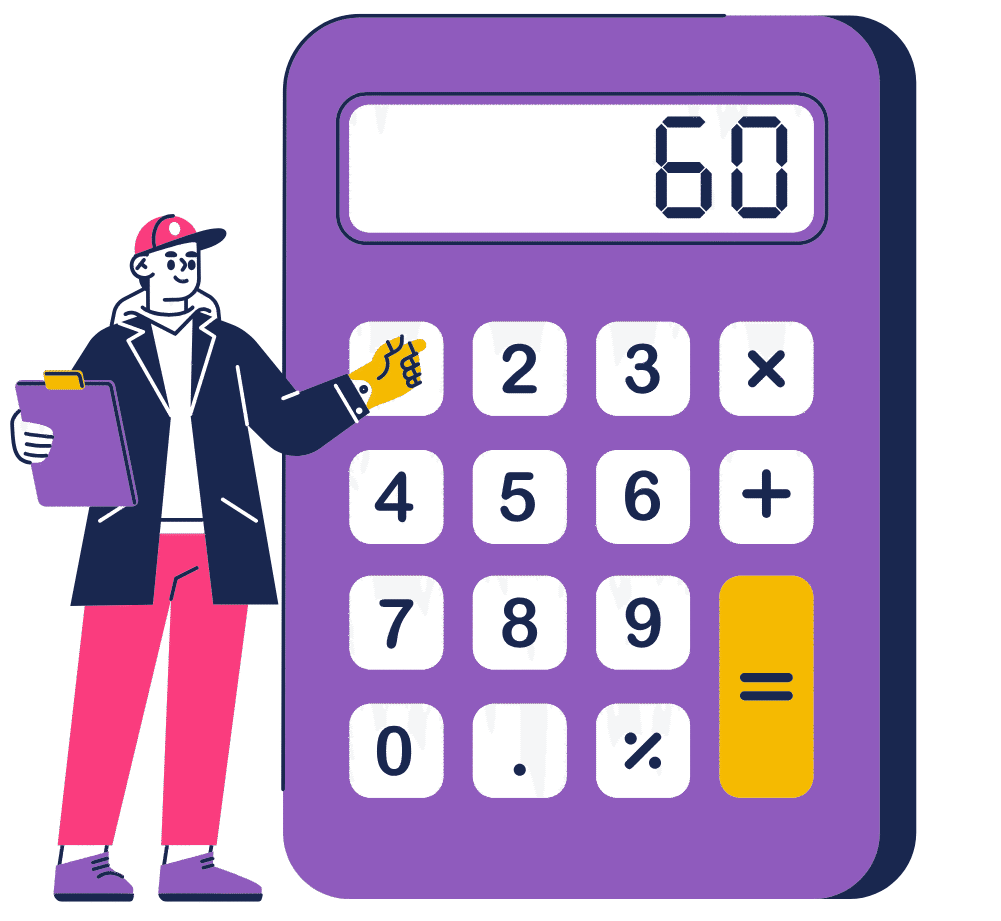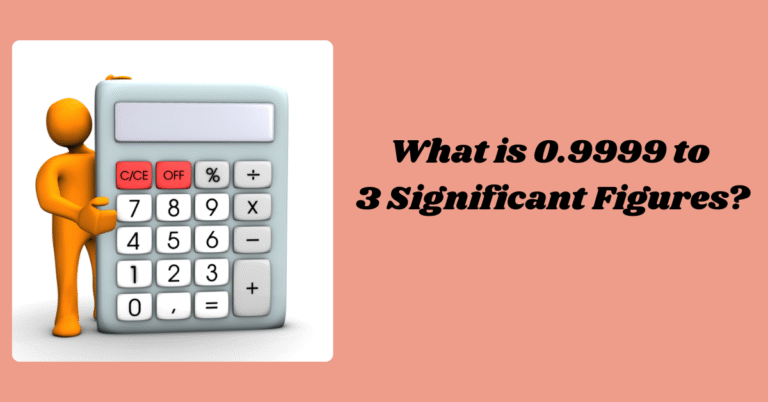Rule For Significant Figures in Multiplication and Division?
The rule for significant figures in multiplication and division is simple: round your answer to match the number with the fewest significant figures. For example, if you multiply 3.45 (3 sig figs) by 2.1 (2 sig figs), your answer should have 2 significant figures.
This rule helps you report measurements that make sense. Your calculator might show many digits, but only some of them are meaningful. Let’s explore how this rule works and why it matters for accurate calculations.
What Makes Multiplication and Division Different
The Basic Rule Explained
When you multiply or divide numbers, the answer should be rounded to the same number of significant figures as the measurement with the least number of significant figures. This is different from addition and subtraction, which use decimal places instead.
Think of it like a chain. Your answer is only as strong as the weakest link. If one number has fewer significant figures, it limits how precise your final answer can be.
Why This Rule Exists
Measurement uncertainty expresses incomplete knowledge about the measurand. When you multiply numbers, you’re combining their uncertainties. The least precise number determines how precise your result can be.
For example:
- 12.3 × 4.6 = 56.58 → round to 57 (2 sig figs)
- 0.048 × 32.97 = 1.58256 → round to 1.6 (2 sig figs)
How to Apply the Rule Step by Step
Step 1: Count Significant Figures in Each Number
Before you calculate, count how many significant figures each number has:
- 2.48 has 3 significant figures
- 6.3 has 2 significant figures
- 0.0045 has 2 significant figures
Step 2: Find the Smallest Count
Look at all your numbers and find which one has the fewest significant figures. This number will control your final answer.
Step 3: Do the Math
Multiply or divide as normal. Your calculator will give you many digits, but don’t worry about that yet.
Step 4: Round to the Correct Amount
Round your final answer to match the number with the fewest significant figures.
Real Examples That Show How It Works
Example 1: Simple Multiplication
Let’s multiply 2.48 × 6.3:
- Count sig figs: 2.48 (3 sig figs), 6.3 (2 sig figs)
- Smallest count: 2 significant figures
- Calculate: 2.48 × 6.3 = 15.624
- Round: 15.6 → 16 (2 sig figs)
Example 2: Division Problem
Let’s divide 37.46 ÷ 12.7:
- Count sig figs: 37.46 (4 sig figs), 12.7 (3 sig figs)
- Smallest count: 3 significant figures
- The result on a calculator would be 2.949606299
- Round: 2.95 (3 sig figs)
Example 3: Multiple Numbers
For 10.61 × 12.133 × 3.25:
- Count sig figs: 10.61 (4), 12.133 (5), 3.25 (3)
- Smallest count: 3 significant figures
- Calculate: 418.387…
- Round: 418 (3 sig figs)
Common Mistakes to Avoid
Mistake 1: Rounding Too Early
Never round numbers during the middle of your calculation. Do all the math first, then round only at the very end.
Wrong: 2.5 × 3.7 → 2.5 × 4 = 10 Right: 2.5 × 3.7 = 9.25 → 9.3 (2 sig figs)
Mistake 2: Counting Wrong
Make sure you know the significant figures rules for identifying digits correctly:
- All non-zero digits count
- Zeros between digits count
- Leading zeros don’t count
- Trailing zeros with decimals count
Mistake 3: Using Addition Rules
Don’t mix up the rules! Multiplication and division use the total number of significant figures. Addition and subtraction use decimal places.
Mistake 4: Trusting Your Calculator
Calculators do just what is asked of them—no more and no less. However, they sometimes can get a little out of hand. Your calculator doesn’t know about significant figures. You have to make the smart choice about how many digits to keep.
Why Scientists Use This Rule
It Matches Real Measurement Limits
When a measurement is taken, the precision of that measurement is dependent on the equipment used to take the measurement. If your scale only measures to 0.1 grams, your answer can’t be more precise than that.
It Prevents False Accuracy
The end calculation should not have more significant digits than the original set of data. This rule stops you from claiming your answer is more exact than your starting numbers.
It’s Used by Professional Scientists
While students learn simplified rules, professional scientists estimate their combined uncertainty by considering “components” of uncertainty. The basic multiplication rule is a good starting point that works for most cases.
Practice Problems to Master the Rule
Set 1: Basic Multiplication
- 3.2 × 4.56 = ?
- 0.045 × 12.1 = ?
- 25.0 × 3.14 = ?
Set 2: Division Practice
- 89.5 ÷ 2.3 = ?
- 0.00456 ÷ 1.2 = ?
- 250 ÷ 4.75 = ?
Set 3: Mixed Operations
- (15.6 × 2.1) ÷ 3.45 = ?
- 8.91 × (45.2 ÷ 6.1) = ?
Answers: Set 1: 1) 15, 2) 0.54, 3) 78.5 Set 2: 1) 39, 2) 0.0038, 3) 53 Set 3: 1) 9.5, 2) 66
When the Rule Gets Tricky
Scientific Notation Numbers
For numbers like 4.56 × 10³, only count the digits in 4.56. The power of 10 doesn’t affect significant figures.
Exact Numbers and Constants
Some numbers have infinite significant figures:
- Counting (5 apples, 12 students)
- Definitions (60 seconds = 1 minute)
- Mathematical constants (π, when using the calculator button)
These don’t limit your answer’s precision.
Very Small or Large Numbers
Whether you have 0.0045 or 4.5 × 10⁻³, both have 2 significant figures. The size doesn’t matter—only the precision.
Tools to Help You Calculate
Using Online Calculators
A significant figures calculator can check your work and show you the proper rounding. These tools follow the same rules you’re learning.
Scientific Calculator Tips
Most scientific calculators don’t automatically apply sig fig rules. You’ll need to:
- Do the calculation
- Look at your starting numbers
- Round the result yourself
Keeping Track During Long Problems
For complex calculations:
- Write down sig fig counts next to each number
- Don’t round until the very end
- Double-check your final rounding
Final Thoughts
The rule for significant figures in multiplication and division is straightforward: match the number with the fewest significant figures. This simple rule helps you report answers that make scientific sense.
Remember these key points:
- Count significant figures in all your starting numbers
- Find the smallest count
- Do your math completely
- Round only at the end
- Your answer can’t be more precise than your least precise measurement
Practice with different problems until this becomes second nature. With time, you’ll quickly spot which number limits your precision and round correctly every time.
Ready to test your skills? Use our calculator to practice more problems and check your answers instantly.

